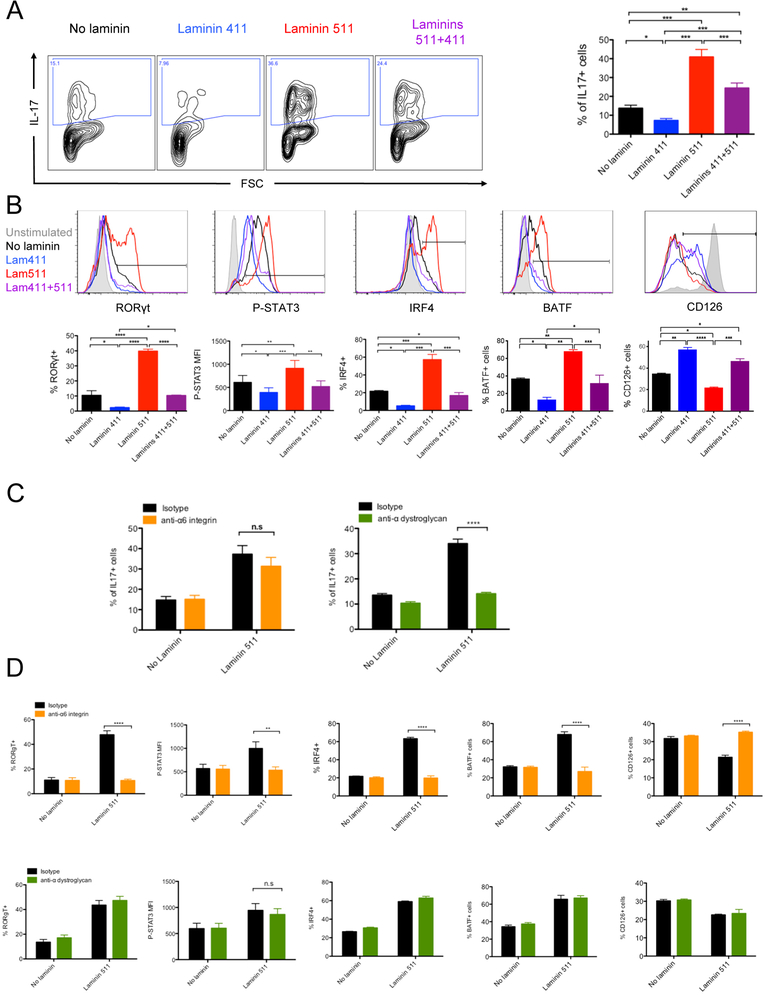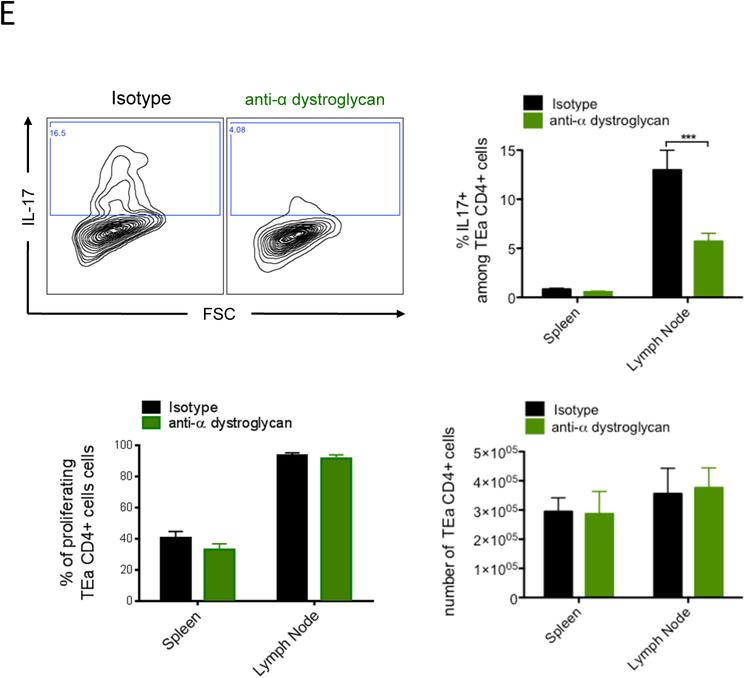Figure 5.
Laminin 511 promotes Th17 polarization via the α-dystroglycan receptor. CD4 T lymphocytes evaluated by flow cytometry for IL-17 after 5 days of culture (A, C), Rorγt, phopho-Stat3, Irf4, Batf and CD126 (B, D) expression after 16 hours of culture in pro-Th17 environment with laminin 411 (2 μg/mL) and/or laminin 511 (1 μg/mL) in presence of functional blocking anti-α6 integrin mAb, anti-α-dystroglycan or isotype control (C, D). Data shown as representative profiles (A, B) and mean ± AEM (A-D) of at least three independent experiments with duplicate samples. (E) CFA/Ea treated mice received 5 × 106 CFSE-labeled CD45.1 Ea TCR transgenic CD4+ T cells, with or without anti-αDG mAb, euthanized three days post transfer, and donor lymphocytes from spleen and skin LNs assessed as percentage of IL17+ donor cells (CD4+ CD45.1+) in different organs by flow cytometry. Representative profile shown with quantitative analysis of three independent experiments. Data shown as mean ± SEM of eight mice per group from three independent experiments.
*P < 0.05, **P < 0.01, ***P < 0.001.


